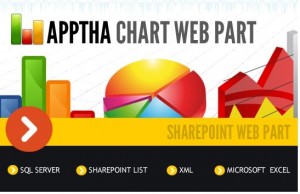Implementing a Cloud Management Strategy
Cloud computing is becoming more and more popular and important for businesses to implement. However, if you aren’t organizing the data you put into the cloud properly, you could run into a myriad of issues down the line. To best avoid these issues, it’s best to create and implement a robust cloud management strategy as soon as possible.
In this article, we’ll explain how and why you need a cloud management strategy as well as give a few brief examples to help you more efficiently manage your cloud. To begin, we’ll start by covering what tags are and why they’re essential.
What Are Tags?

Tags are small labels that help you understand what you have stored in the cloud. There are two different types of tags: those generated by the cloud service and those generated by the user.
Auto-generated tags are usually a string of numbers and letters you can’t change, while those generated by the user are exactly what they sound like; hand-written tags written by you or your employees to help you understand what data is stored where. While both are important, we’ll focus on the user generated ones since you’ll not only be able to change these, but you’ll also need them to implement a cloud management strategy.
User generated tags are made up of two parts: the key and the value. For example, a key may be Microsoft Office 365 Files, and the value may be Documents. Depending on what data is stored in the cloud, your keys and values may be more or less complex than in this example.
The only thing that matters about the tags you use is how much sense they make to both you and your team so you can access the data when necessary.
Why Use Tags?
There are a wide range of benefits to proper tag use, but we’ll just cover a few here. One of the biggest reasons to use tags is that it will help save you money. You’ll be able to get a clear cost report of each piece of data stored in the cloud and this clarity could help you understand where your expenses are and may even allow you to acquire discounts.
Another important reason is efficiency. If your teams know exactly where all of the resources they need can be found, they’ll be able to work faster because they won’t be spending time searching for what they need. It can also help them diagnose and repair issues when they arise.
The third reason is to track resources. You’ll be able to see where attention is being drawn, how much it’s costing to keep that data in the cloud, and more. If you find a directory that is underperforming, you’ll be able to easily shut it down. This also makes it easier for you to see where you need to be better focusing your business’s time, attention and resources.
The final reason we’ll cover here is security and upkeep. These are lumped together for one simple reason: they both require a lot of attention. With the proper tags you’ll be able to see where sensitive information is held and beef up the security on those files, making your business more secure and trustworthy.
Once the appropriate cloud management strategy has been implemented, you’ll also be able to see which areas may be out of date and require attention which can also improve security as some out-of-date programs or applications can sometimes pose a security risk.
How Do You Manage the Cloud?
Once you’ve tagged all of your data in the cloud, it’s time to implement your cloud management strategy. The first thing you’ll need is a cloud monitoring program that will allow you to better see how much each resource costs and more.
There’s a lot of information a monitoring program can provide, from firewall logs to help you see where security needs to be tightened to benchmarking that makes it easier to tell how effective a hardware or software upgrade was. While some cloud services have a built-in monitoring program, some show very limited information. Check to see if your cloud service offers a monitoring program before you start looking for a third-party one.
In order to implement a cloud management strategy, you need to understand the cloud service you’re using, what it provides, and what it lacks, and you’ll need the right team members and tools to implement a cloud management strategy. However, at the end of the day, the transparency and ease of use provided by one will make it all worthwhile.








